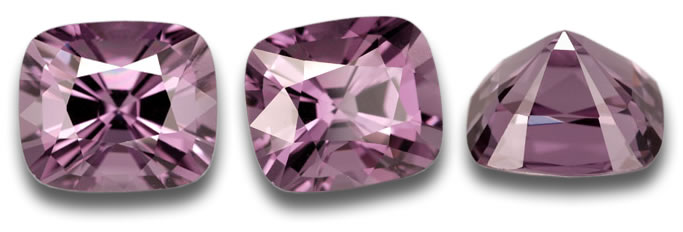Your Details
Your Details
GemSelect Newsletter - May 2011In our newsletter this month:
Demantoid Garnet from Namibia Back to Top
Garnet has been a popular gemstone for centuries due to its very good hardness (7 to 7.5 on the Mohs scale) and great brilliance. Garnet also has a distinctive purity of color since it is one of the very few singly refractive gemstones (spinel and diamond are examples of other singly refractive gemstones). Since the deep red garnets are abundant and inexpensive, garnet has been regarded by some buyers as a rather common gemstone. Yet, while there are some common and inexpensive garnets such as almandine, there are also some rare and expensive ones. The rarer garnets include spessartite, tsavorite and demantoid. 
Natural Demantoid Garnet
Of these rare garnets, demantoid is by far the rarest and most valuable. In fact demantoid is one of the rarest of all colored gemstones. Particularly fine demantoids can command thousands of dollars per carat. What makes demantoid garnet so special? Demantoid belongs to the andradite variety of garnet, which is calcium iron silicate with a density of 3.7 to 4.1 and a refractive index of 1.88 to 1.94. The high refractive index makes demantoid the most brilliant of all the garnets, and demantoid garnet has a higher refractive index than sapphire and ruby. In fact, the refractive index of demantoid is in the same range as zircon and sphene. 
Demantoid Garnet from Namibia
Demantoid's greatest claim to fame is its exceptional fire; the dispersion of white light into the colors of the spectrum. Demantoid has the highest dispersion rating (.057) of any jewelry gemstone, higher even than diamond (.044). Indeed, the very name demantoid means "diamond-like". While most garnet varieties have been known since ancient times, demantoid garnet was not discovered until 1853, in the Ural Mountains of Russia. The Russian deposits remained the only source for demantoid until a major find in Namibia in 1996. The Russian demantoid is rarer and is generally more highly valued. Distinctive 'horsetail' inclusions are the telltale sign of Russian demantoid, since to date, these inclusions have not been found in the Namibian material. But the Nambian demantoid deposits have made this gemstone available to a wider market at a more affordable price. Rare and Unusual Gems Back to Top
Each month we feature a rare and unusual gem from our inventory. This month we would like to show you a gorgeous spinel from Burma: 
4.32-Ct Natural Spinel from Burma
Spinel is best known for its ruby-like color. Some of the most famous gems thought to be rubies are actually spinel. For more detail on this topic please read our article on rare spinel. Nowadays, spinel gems are hardly found in the ruby-red color. Most red spinel gems found have deeper colors. The brighter ones are pinkish and wouldn't come close to a ruby color. The vivid pink ones are also on the top of the price scale. Customer Questions Back to Top
Every month we answer questions of general interest from our customers. Please feel free to send your questions or suggestions to our support team at help@gemselect.com! Question
If I buy items with a certificate and decide to return them will you refund the $20.00 of the certificate or will I lose that money? CM, UK.
Answer
We always refund the full amount paid for the item and the $20.00 for the certificate.
However, if the certificate is not returned we can only refund the item price in full. Question
I ordered two square-shaped rubies, each of them with an exact weight of 0.46 ct and matching color. Last week I went to my jeweler to get the stones set and he told me one is bigger than the other and they won't fit in the setting. The color is perfectly matching but how can they be different in size when they both come in the same shape and weight? HS, USA.
Answer
Usually gems of the same type in the same shape and cut should be very close in their weight. However, if the cut is just slightly different, the measurement could be affected in all dimensions.
Quite often, we see that the depth of the stone is different, so the width and length will not be the same, even when the weight is equal. We always recommend buying gemstones by size and not by weight to avoid this problem! Keep up with our new arrivals before they hit the newsletter by joining our thousands of fans and followers on our social networking pages. We love interacting with our customers - you can visit us on Tumblr, LinkedIn, Twitter, Facebook or Pinterest! To ensure you can receive our emails, please be sure to add help@gemselect.com to your list of safe contacts, or you add us into your email address book! Please feel free to contact us with any questions, comments and queries! We respond to each and every email we receive. Happy Gem Hunting! |
